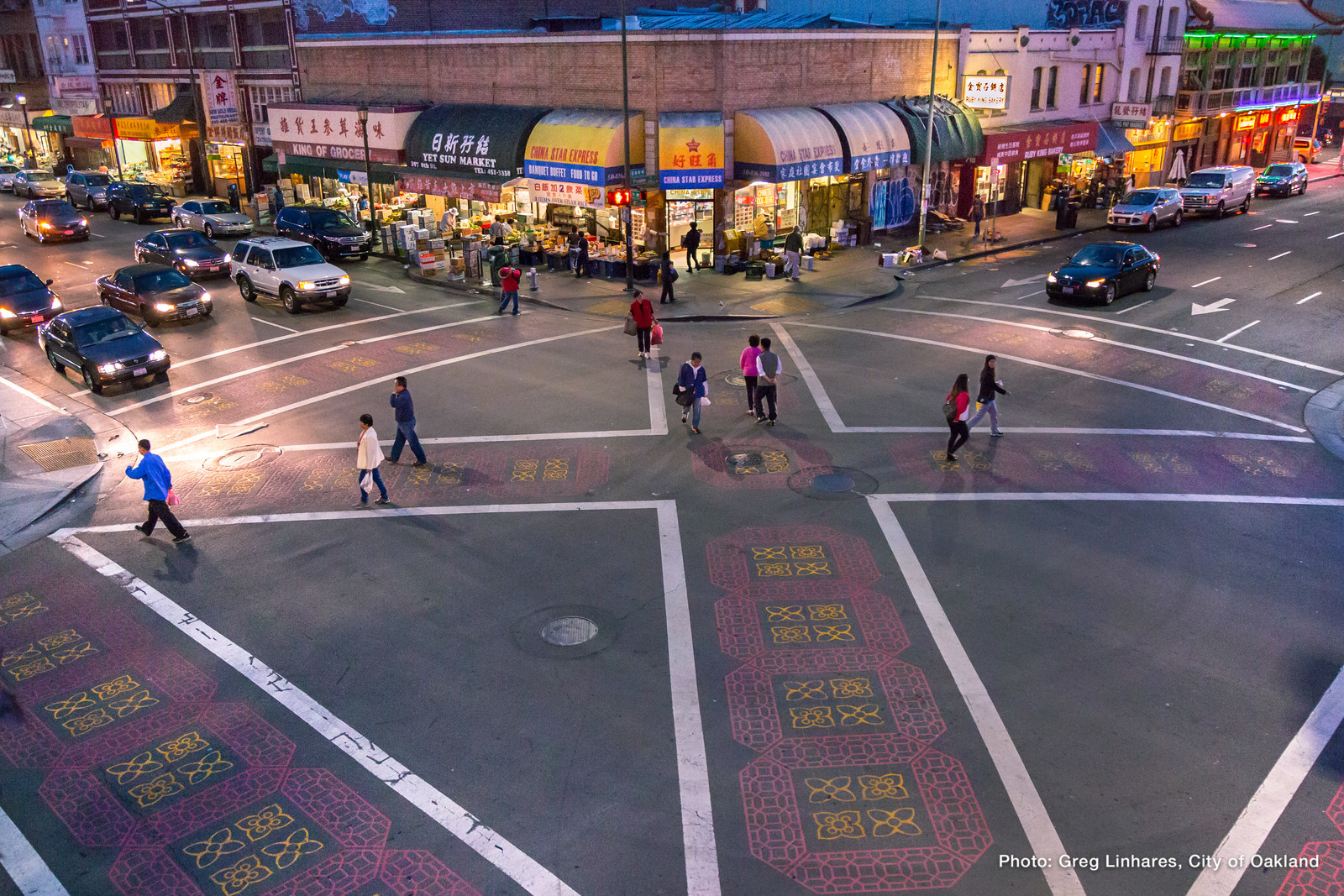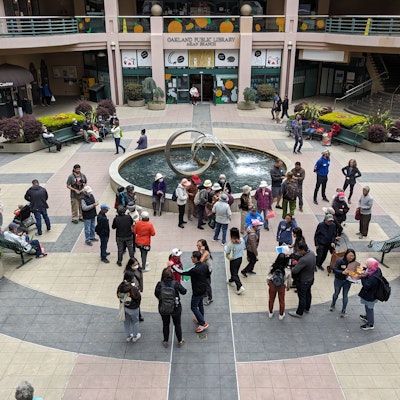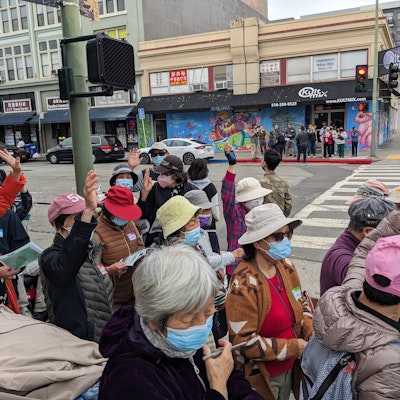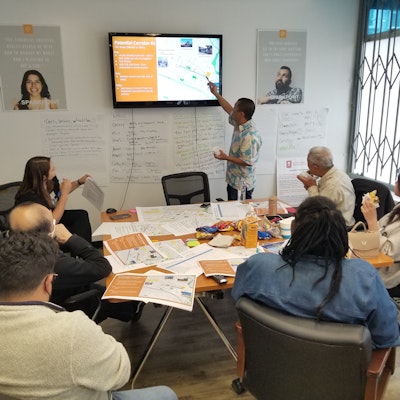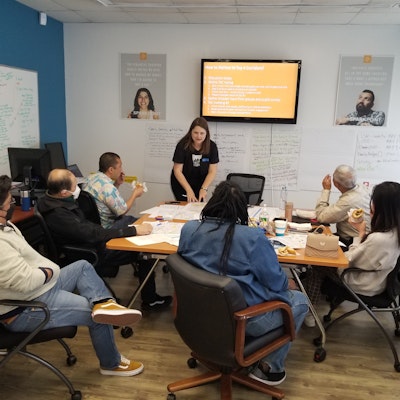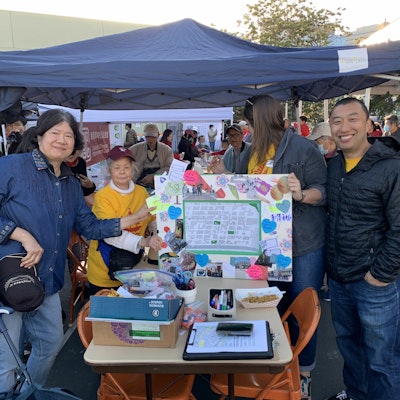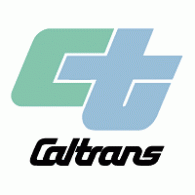CHECK OUT DRAFT CONCEPT PLANS BELOW!
The concept plans reflect community requested infrastructure focused on safety such as widen sidewalks, more scrambles at intersection, street lighting and more!
- 9th Street
- Webster
- Harrison
Once you have a chance to review please check out our survey link above DEADLINE EXTENED TO JANUARY 31,2025. This survey will lett us know how we can improve on the designs.
We are pleased to announce the release of two new videos, available in both English and Cantonese, designed to provide a detailed explanation of the current design concept proposals and the planning process before filling out the survey.
- Watch this new video of community input informing the project to date in English, or in Cantonese.
Watch this detailed introduction to the first draft concept designs in English, or in Cantonese.
Plan Goals
The Plan will work with community members and stakeholders to identify a set of key corridors with multimodal upgrades through outreach to complete the conceptual designs necessary to advance the project. The conceptual designs created by this plan will be advanced for future construction grant funding opportunities and coordinated with future developments or regional projects that will position Chinatown to safely accommodate new residents and visitors, alongside thriving legacy businesses and institutions.
This plan aims to shift the course for Oakland's Chinatown by creating a path for implementation of community-developed and approved projects. This project will address creating safer streets for disadvantaged communities in 4 phases:
- Phase 1 - Examine past planning recommendations and identify a set of key corridors for development.
- Phase 2 - Agree on final project description for multimodal upgrades on key corridors and connection points
- Phase 3 - Perform conceptual designs for capital improvements on key corridors- Current
- Phase 4 - Designs ready for grant development
Key Corridors
Through extensive community engagement and outreach, the following corridors were chosen to be the focus of the plan:
- 8th and 9th Street Couplet
- Webster and Harrison Street Couplet
- 7th Street
- 10th Street
Three of these streets were already slated for improvements via the following projects:
- 7th Street: Oakland Alameda Access Project
- 8th Street: 8th Street Streetscape Improvement Project
- 10th Street: 10th Street Improvement Project
The remaining streets will receive conceptual designs via the plan:
- 9th Street (core project area: Broadway to Fallon; full project: MLK Jr Way to Fallon)
- Webster Street (core project area: 6th to 10th Streets, full project: 6th to 14th)
- Harrison Street (core project area: 6th to 10th Streets; full project: 6th to 14th)
Major improvements will be concentrated in the core project areas, with other improvements spreading further to enhance connectivity. Examples of core area design elements that will be explored include widened sidewalks, angled parking, intersection bulb-outs, pedestrian-scale lighting, and pedestrian scrambles.
Engagement
The East Bay Asian Local Development Corporation (EBALDC) is working to engage residents and stakeholders for the Chinatown Complete Streets Plan. EBALDC is a non-profit community development organization with over 48 years of experience in building healthy, vibrant and safe neighborhoods in Oakland and East Bay. they address the specific needs of individual neighborhoods by connecting the essential elements of health and wellbeing through their Healthy Neighborhoods Approach. For this plan, EBALDC has developed an engagement plan honoring past planning processes to minimize engagement fatigue in Chinatown.
Upcoming Engagement
- Technical Advisory Committee (TAC)
- Meeting #8, Mid-March 2025
- Online Survey
- Ongoing through January 2025
- Business Canvassing
- Ongoing through January 2025
- Neighbor Group Discussions
- OCIC Board January 27, 2025
- Follow-up OCCC Merchant Meeting: date TBD
- Shoong School Meeting/ Demonstration: date TBD
- Office Hours (in-person discussions with large-format versions of the drawings in English and Chinese)
Tuesdays and Thursdays in January: January, 3–5 PM at MHACC Offices, 388 9th Street, Suite 208, Pacific Renaissance Plaza, Oakland. Please RSVP to lguinan@ebaldc.org
2024
- Technical Advisory Committee (TAC)
- TAC 5 February 15, 2024
- TAC 6 November 6, 2024
- TAC 7 December 16, 2024
- Flow and Flourish: Reimagining Chinatown Streets
- Block Party on November 16, 2024 on 9th and 10th Streets between Webster and Harrison Streets. SEE THE EVENT VIDEO IN ENGLISH AND CHINESE HERE: https://vimeo.com/1036570699
- Neighbor Group Discussions
- Lantern Festival February 15, 2024
- Chinatown Chamber of Commerce March 12, 2024
- OCIC Board March 14, 2024
- Lincoln PTA March 19,2024
- OCC March 20, 2024
- Business Canvasing (8th St) April 26, 2024
- Family Focus Group July 18, 2024
- Senior Focus Group July 29, 2024
- Business Canvassing (planning area) July - August 2024
- Business Canvassing (9th and 10th St) August 30, 2024
- OCIC Neighborhood Identity Committee September 26, 2024
- Lincoln Summer Nights October 10, 2024
- OCC Friendsgiving November 20, 2024
- OCIC Board November 19, 2024
- Chinatown Chamber of Commerce November 25, 2024
- Shoong CCC December 2, 2024
- Emergency Chinatown Chamber of Commerce December 9, 2024
- Meeting focused on Parking citation, parking structure and 9th St improvements
- Sticky Rice/Oakland Bloom Business Safety December 17, 2024
- Open House
- On December 11, 2024 OakDOT held an open house in the courtyard of the Pacific Renaissance Plaza where concept plans for 9th St, Webster St and Harrison St to gather feedback to refine the design to reflect the needs of the Chinatown Community
2023
- Formation of a Technical Advisory Committee (TAC)
- See the slide presentations for each TAC meeting in the Documents section below
- TAC 1 May 11, 2023
- TAC 2 June 12, 2023
- TAC 3 August 14, 2023
- TAC 4 December 15, 2023
- Neighbor Group Discussions
- Family Bridges Senior Affordable Housing Meeting March 2023 &, August 18,2023
- OCIC Sidewalks Committee May 5, 2023
- Chinatown Chamber of Commerce May 6, 2023
- OCIC Board May 16, 2023
- Oakland Chinatown Coalition May 17, 2023
- Lincoln Summer Nights May 11, 2023, July 13, 2023
- Survey (closed 8/31/2023)
- 230 people filled out a survey to give feedback on which corridors should be prioritized, as well as what the greatest challenges on those corridors were. This data, along with other outreach data, was used to choose the final corridors and to guide the design consultant's work on the chosen corridors.
- Sitewalk Workshop (June 24, 2023)
- On June 24th, 2023, EBALDC and OakDOT led a sitewalk of the potential project corridors (7th St, 8th/9th, Webster/Harrison, and 10th St).
- Forty (40) residents attended. Most spoke Cantonese and lived in Chinatown. These residents provided firsthand input on the transportation challenges and needs on these Chinatown streets.
Chinatown Context
Chinatown is a central neighborhood in Downtown Oakland bordered by Broadway, 14th St, Fallon St, and Interstate 880. It is a vibrant, bustling neighborhood that is a centerpiece of Oakland’s cultural identity. Unfortunately, Chinatown is also home to the highest concentration of pedestrian and bicycle collisions in the city.
- 137 pedestrian collisions
- 71 bicycle collisions in the five years from 2015 to 2019, with collisions trending upwards
- 30% of streets are on Oakland’s High Injury Network – the 6% of Oakland streets that see 63% of severe and fatal crashes. This is a central equity issue for Oakland, as Asian Americans in the City are 3.5 times more likely to be killed while walking than Whites.
Chinatown is also one of the most transit-dependent neighborhoods in Oakland. Compared to Oaklanders citywide, residents in the project area are almost twice as likely to take transit versus driving alone. 7% of residents also identify biking as their primary mode compared to a citywide 5%. Of the two census tracts that contain Chinatown, 1388 of 3612 households (38%) do not have access to a vehicle, compared to a citywide average of 16%.
Chinatown is a dense area with a high concentration of retail and commercial activity. One-way road patterns create wide, fast streets that are imposing for those walking or biking. Double parking and loading in the street are the norm, which creates issues with pedestrian visibility and conflicts with people biking. This results in a very dangerous pedestrian environment that is in need for improvements immediately.
What is a "Complete Street"?
Complete Streets are streets designed and operated to enable safe use and support mobility for all users. Those include people of all ages, abilities, regardless of whether they are traveling as drivers, pedestrians, bicyclists, or transit riders. Complete Streets are designed to accommodate all methods of transportation to allow people to easily travel even if they are unable to drive a car.
This form of transit equity would bring much more safety and less stress to business patrons by improving access to local institutions and businesses through alternate modes of transportation.
Updated: January 17, 2025
Updated: October 16, 2023
Updated: August 31, 2023
Updated: June 16, 2023
Posted: February 1, 2023

